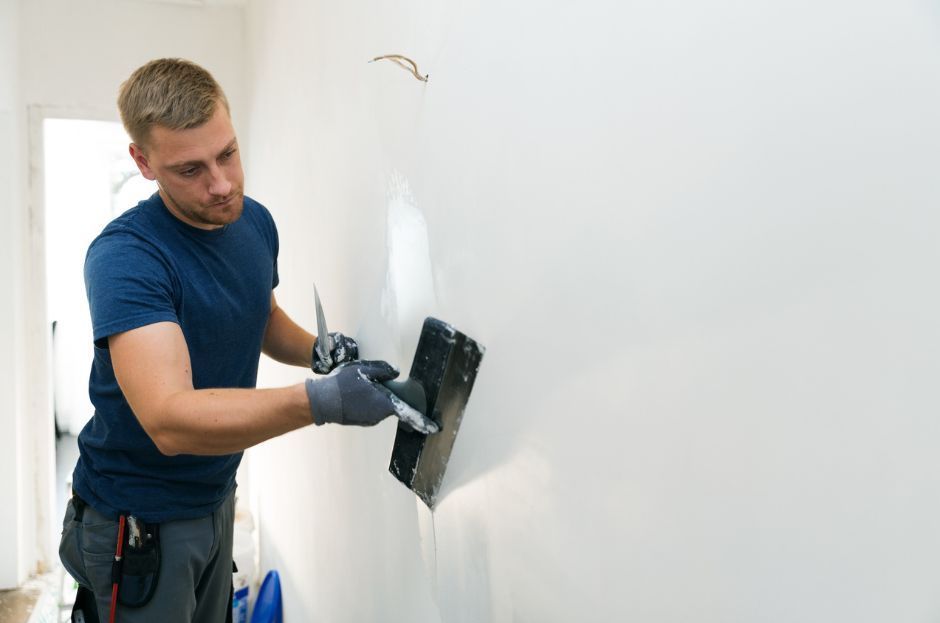Lakewood Plaster Repair Contractors

As the most trusted plaster repair contractors in Lakewood, we provide residents with exceptional services through years of experience and professional training. Our team is skilled and qualified in all levels of plaster repairs- from patching plaster cracks and holes to re-finishing plaster to the highest level.
We are the Lakewood experts in wall plaster and lath- and we take pride in the trust homeowners put in us to provide the highest level of customer service and craftsmanship.
If you want to learn more about our premium interior plaster services, don’t hesitate to get in touch. You can contact the Lakewood Drywall Squad by phone or through a free quote request form on our website. Just send us your details, and we will get back to you!
Your Local Plaster Repair Experts
Our Plaster Repair Services
Whenever your plastered walls require some attention, our team is reliable and ready to help. Our repair services are comprehensive, thanks to many years of training and experience- helping owners keep their homes in great shape.
Here is a brief introduction to some of the plaster repair services we provide.
Plaster Patch Jobs
You wouldn’t be the first or last person to accidentally put a hole in your drywall- it happens sometimes, and there is a simple fix. A plaster patch is a money-saving godsend in situations where plaster filler won’t work (if the wall is hollow), as it means you don’t have to replace the entire sheet of drywall.
Fixing plasterboard wall using a patch is technically straightforward- but it requires acute attention to detail and professional accuracy to make it look seamless with the original wall. While you can watch a video on how to patch plaster walls, it is very difficult to repair plastering this way without it being noticeable.
Our team uses premium quality plaster glue and other construction adhesives for maximum bonding- and can get the job done quickly and effectively, with perfect results every time.
Water Damage Plaster Repair
After suffering water damage, plaster almost always shows visible signs that nobody wants in their home. Although many cases of penetrative water damage leave no choice but to remove the drywall completely, repairing plaster walls is sometimes possible.
Water-damaged plaster wall repair techniques vary depending on how many layers are affected. Sometimes, it is a case of removing the top layer, and re-sealing it with specialist primer joint compound. Other times, we may have to cut out a larger area (particularly if there are signs of mold).
We always ensure that we find the root of the cause and remove every piece of damaged drywall to avoid the problem returning or getting worse.
Re-Finishing a Damaged Wall
Often, a repaired damaged wall does not look quite as good as it did before- but with us on the case, you will never know. We use our unrivaled expertise in high-level finishing to restore the flawless appearance of your plaster- priming, mudding, and sanding plaster walls until the patch, filler, or replacement is unnoticeable.
Plaster Ceiling Repair
We are also experts in plaster ceiling repair. Working to repair plaster ceiling is similar to techniques used on plaster for walls- but there are other safety and structural factors to consider. You can rest assured that our contractors take every necessary precaution to ensure the best outcome when repairing your plaster ceiling.
Lakewood's Expert Local Plasterers Are Here to Help
A professional plasterer does more than fix plaster walls- they can help bring your renovation visions to life with their tailored skills and services. Bringing in a trusted Lakewood plaster company is the best thing you can do for cost-effective, top-quality home improvements.
Contact the Lakewood Drywall Squad today to learn how our expert drywall company can help with your next project. Give us a call- or send us your details through our website to request and fast and accurate quote completely free of charge.
Plaster Repair FAQs
Our Frequently Asked Questions




